Animals, astronauts, and an ancient ice bird
In this week’s episode, we’re going to take you on a journey through some extra special science stories we reported on in 2020 - from chatting with a space shuttle astronaut to a 46,000 year old ice bird, we’ve got some curious tales that we covered for some of our other Naked Scientists podcasts...
In this episode
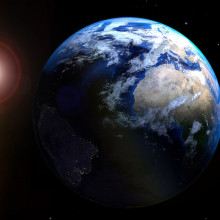
01:06 - Astronaut Mike Mullane: Life on the Space Shuttle
Astronaut Mike Mullane: Life on the Space Shuttle
Mike Mullane, Former NASA Astronaut
We’re starting from great heights this week and considering the loftier lifestyle - Mike Mullane was recruited in the first intake of space shuttle astronauts and flew 3 missions in the spacecraft. He spoke with Sue Nelson from the Space Boffins back in January 2020…
Mike - Well, every hour's scheduled, but in our particular case, all three of my missions were what they call deployable missions. We took up satellites and deployed them. And 99% then of the work you're going to do is associated with this deploying the satellite. And they all typically want to be deployed early in the mission. So fortunately for me on these missions, for the first two or three days, you're working and you're getting these satellites out and then you have maybe two or three days before you reenter where it might be some minor experiment in the cockpit you might have something to do with. And then another experiment, which you all love, was just taking photos of the earth. And these various scientists would give us specific areas they wanted us to take photos. And of course, you know, that sitting there at a window and taking photos of the earth, and eating Peanut M&Ms, well, it doesn't get much better than that! So I had a lot of time to be at the windows and looking out the windows. We didn't have a space module or anything that had 24 /7 operations with experiments. And the other thing about the deployable missions, the payload weights are so heavy that you don't have weight to add in a bunch of experiments. So I had a lot of time to look out the window.
Sue - You get used to the food, the effects it had on your body, on your face? So often people say they get quite puffy.
Mike - Yeah, well actually let's talk physiology. There're three major physiological events that occur very quickly when you get in a low-earth orbit, one of which is about half the astronauts end up getting sick and vomiting. They call it space sickness, but it has nothing to do with earth motion sickness. It's not correllated. If you get seasick, car sick, plane sick, here on earth, it will not predict whether you get sick in space. You may, you may not. I'm a classic example. I have been sick in the back of fighter jets countless times, but up in space, I didn't get sick at all. Then we've had test pilots aboard some of my flights who, you know, were sick for a couple of days. And they had never been sick on earth. So they can't figure out what causes that. But that's one thing, this space sickness, which fortunately I dodged that bullet, but the other bullet, you can't dodge. One is a lengthening of your spine. And this is due to that fluid shift. It causes the discs between your vertebrae to absorb water and fluids, because now it's all even through your body, it's not trapped in the lower part of your body by gravity. So that swelling of those discs push your vertebrae apart. And it makes you taller. I was an inch and half taller space than I am here. Problem with that is you get your severe lower backache because the muscles of the lower back don't accommodate for that growth in the spine quickly. And it really bothers you with a very bad backache. And then the fluid shift, the other third effect is it does make your face puffy and gives you a mild headache with this migration of fluid into the upper part of your body. So those are the three physiological effects.
Sue - Did it affect your taste of smell or taste or anything like that for the food? I know the food is pretty bland.
Mike - Yeah, the food - your sense of taste is affected because it's sort of like having a cold. Having this fluid in your head. You just have more fluid in your head. So since the taste is muted a little bit, after early flights, when they learned this, they started adding some spicy stuff that you could squeeze onto your... you know taco sauce or something to give it some spicy flavor. To be honest, food wasn't that important for me because I was flying on very short missions. The longest mission was six days, so M&M's, butter cookies, puddings, hey, that was great! The thing about weightlessness is that everything associated with habitability, you know, everything we do here on earth - eat, sleep, use a toilet, that type of stuff is much more difficult and time-consuming in space. Toilet operations here on earth, you know, may take you five minutes or something, or one minute, whatever. And up there, you can easily quadruple that time with the preparations for the toilet and the use of it and the cleanup afterwards. So that's a big pain frankly. And preparing food, you have things in different containers, all attached to the wall, and then you forget where you attached them by Velcro, and so you're looking around for those. So you waste a lot of time doing that. So there were times that you would really love, I think, as an astronaut to say, "I want to be in a gravity vector. Now I'm going to use a toilet. I want gravity. I'm going to prepare a meal. I want gravity", you know, all those habitability types of things, but the rest of the time just floating around is wonderful. It's absolutely wonderful.
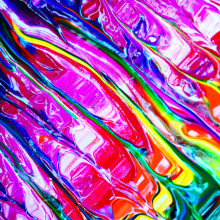
06:21 - Colour constancy: how do we see in colour?
Colour constancy: how do we see in colour?
Anya Hurlbert, Newcastle University
You might have heard of photoreceptors: the cone cells, and the rod cells. Basically, when light hits your eye it stimulates these cells, which send a message to your brain. Your rod cells are great at seeing in dim light but can only see in shades of black and white, whereas your cone cells only work well in brighter light and allow you to see colour. But it turns out there’s more to it than that, as thanks to physics, when we see a colourful object, what we’re really seeing is the colour of light reflected back to us from light hitting that object. Katie Haylor spoke to colour fanatic Anya Hurlbert from the University of Newcastle...
Katie - Can we start off with a very brief rundown of the basics? I'm currently looking at a computer screen with a very bright blue background. How am I perceiving that as blue?
Anya - Your photoreceptors in your eye are picking up that light signal and analysing it in terms of its different wavelength components in a sort of bluish band, a greenish band and a reddish band. The cells further on in the visual pathway are comparing how much bluish, greenish, reddish light there is from your computer screen relative to the background. So when you're seeing colour, you're always seeing relative light amounts from the thing you're looking at, relative to the background.
Katie - So that means that the quality of the colour is dependent upon the light source, right?
Anya - Absolutely. And since you were talking about your computer screen, I was sort of thinking of your computer screen as the light source. But of course, most things we look at are not light sources, they're surfaces. They absorb light incident on them from a light source and then they reflect the remaining light to the eye. So what we're seeing when we see colours of objects, is the intrinsic material properties of the object that enabled them to reflect certain wavelengths more than others. But the light that hits the eye is a combination of the light that's shining on it from the light source and the inherent reflectance properties of the object.
Katie - Does that mean that if we're looking at something under natural light compared to artificial light, there's quite a difference in what we're actually perceiving in terms of colour?
Anya - Well, there's a huge difference in terms of the light that's hitting the eye. If I take an apple and I look at it in bluish sunlight, it will be reflecting much more bluish light to my than it does when I take it inside and look at it under say tungsten light, or candlelight, which has much more orange light in it. So that red apple would reflect more of that orange light to my eye. But what my whole visual system is doing, from eye to higher levels of the brain, is sort of filtering out that difference in the light shining on the apple. So that I can continue to see it as red.
Katie - Thing is, if we step outside and light sources aren't constant, you might have clouds in the way or other variations. So how does something that I perceive as red keep staying red?
Anya - Well, that whole phenomenon of seeing that apple as red under, as you say, hugely varying lighting conditions is due to this phenomenon that we call colour constancy. And it's deeply embedded in the way we see colours and it's deeply embedded in our whole visual system, in human vision. We're constantly accommodating and compensating for these changes in the light shining on objects.
Katie - So what's the brain doing in order to achieve that?
Anya - It's thought to be doing many different things on multiple levels, from simply adjusting the sensitivity of the light receptors in the eye initially, so that if all the light in the room suddenly goes very reddish, the so-called red cones in the eye will adjust their sensitivity down to compensate for that change in the illumination, to keep the light coming off objects relatively stable. Or to keep the light signals in response to the light coming off objects relatively stable. If there's more red light coming off them, but it's due to the illumination, you want to turn down your sensitivity to that and that's what the receptors in the eye do.
But it's not just in the eye, the brain is continually assessing and adjusting to these changes in the illumination. That can include levels of, for example, memory. So the fact that I have a memory colour for a banana as being yellow might help me to adjust to changes in the colour of the illumination because I can compare the light reflected from the banana at this moment in time with what I know it's colour should be, based on my memory colour. And then calibrate for those changes in the illumination accordingly.
Katie - That's incredible. I imagine that's not conscious, right? That's going on below the surface!
Anya - Yes, it's completely unconscious. We're totally unaware of that. What our brains are doing is really, really phenomenal in day to day, millisecond to millisecond vision. And colour constancy is one of those fascinating phenomena that is really very, very complicated, and we know it's a really massive achievement of the human brain because it's so difficult to enable cameras to achieve the same thing.
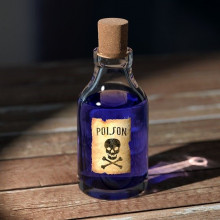
11:46 - Monarch butterflies: beautiful poison
Monarch butterflies: beautiful poison
Anurag Agrawal, Cornell University
Monarch butterflies are something of an iconic butterfly species - think orange wings with large, regular black stripes and some white dots around the edges. They are famous for migrating en masse from the US and Canada to Southern California and Mexico for the winter. Those colourful wings signal more than just beauty - Monarchs are actually very, very poisonous, if even a human ate enough of them they would get very sick. But unlike most other toxic species, the monarch doesn’t make its own poison, as Phil Sansom found out earlier this year...
Anurag - The monarchs are the quintessential example of a butterfly that gets its poisons from its food. The monarch caterpillar feeds on the milkweed leaves and the milkweed leaves are producing poisons called cardiac glycosides
Phil - Cardiac glycosides, you said?
Anurag - Yeah - they bind to a universal animal enzyme and they stop it from functioning, which is what makes them poisonous to most animals.
Phil - What's the enzyme?
Anurag - The enzyme is the sodium-potassium pump and every animal cell, whether it's our human bodies or an insect’s body, uses this enzyme to shuttle salts across the cell membrane - it's a very critical cellular function. And without that, basically, the cell starts to have either too much salt inside or not enough, which basically causes the system to crash.
Phil - Sounds like a nasty poison!
Anurag - Nasty poison - and very general in the sense that all animals use these pumps so it's going to be very poisonous.
Phil - I just have to ask, you said they were called cardiac though. That means heart, right?
Anurag - Great question yeah. The name cardiac glycoside comes from the fact that these compounds have been used historically in traditional cultures to treat congestive heart failure. There've been several really interesting intersections of societal happenings with cardiac glycosides. And one of them is that Vincent van Gogh, as I assume all the listeners will know, in the last two years of his life and in his paintings, they took a turn. His paintings started having much more yellow, and halos around the lights that are so famous in starry night or in the sunflower paintings. Van Gogh was being treated for epilepsy at the time with extracts of the foxglove plant, which have cardiac glycosides. What we now know is that a side effect of too much of this medicine is yellow vision and seeing halos around bright objects.
Phil - That's amazing. Now I assume the monarch butterflies aren't having their cells unable to take salts in and out, and they're not getting their heart conditions treated. How do they not have all this stuff happen to them?
Anurag - The monarch butterfly has three specific mutations that we're aware of in the genes that code for its sodium potassium pump. Quite remarkably, those three single base pair changes alter the physical structure of that pump, making it about 200 times less likely that a cardiac glycoside will bind and stop that pump from functioning.
Phil - But then the butterflies and the caterpillars go beyond that don't they? Because you said that they actually not only get resistant to the poison, but start to use it themselves.
Phil - Absolutely. Yeah. I think one of the most fascinating things about monarch butterflies is they are themselves poisonous and they advertise it with that highly contrasting orange, black and white coloration. The monarch brings those compounds into its body, packs them away in its wings primarily, and that gets used then as the monarch's defense against predators like birds.
Phil - You know, it all sounds like a lot of effort to go through when you could just eat a plant that's not poisonous.
Anurag - No question - it's a lot of effort! But one of the consequences is you've got that resource largely to yourself. You know, one of the axioms in nature is that specialisation is beneficial. A jack of all trades is master of none. But we can't really think of it just as the Monarch butterfly deciding to specialise in eating the milkweed. What really more likely happened is that the monarch butterfly ancestor made initial steps towards feeding and specialising on milkweed. In response to that, the milkweed reciprocally evolved a host of defences to try to push the monarchs away. We call that coevolution when two species are going back and forth, evolving in response to each other.

17:50 - Moths in the bathroom
Moths in the bathroom
Zenobia Lewis, University of Liverpool
Back in April, when the UK was first in lockdown due to the coronavirus pandemic, Phil Sansom spoke with Zenobia Lewis from the University of Liverpool about how she was managing to keep doing her science from home despite the pandemic, and it involves an unlikely room in the house...
Zenobia - I'm a behavioral ecologist, I'm interested in animal behavior and I'm particularly interested in mating behavior. My main study species is a moth called the Indian meal moth. And these are actually pest species of grain. And so in a way a jar of muesli is their natural environment. And as a result I was literally able to just bring my entire lab back home.
Phil - Really? your entire lab?
Zenobia - Okay so a pared down version of it, but enough of the important stuff to be able to maintain my lines while we're on lockdown.
Phil - How many moths have you got?
Zenobia - I literally couldn't tell you, I mean I tried to maintain each generation at about a hundred adults and I brought home nine populations with me, so a lot.
Phil - So that's around 900 moths in jars of muesli in your house?
Zenobia - Yeah.
Phil - Where have you set them up?
Zenobia - I have them in my downstairs toilet. They are usually kept in an incubator so that I can maintain them at a constant temperature. Obviously that's gone out the window now they're in my downstairs bathroom. I have a microscope which I use at times for counting their sperm. And then in all honesty a lot of the kit is jars, masking tape for labeling, permanent markers for writing labels, really bog standard stuff.
Phil - How are they adapting to life in your downstairs toilet?
Zenobia - They're still alive so I think they're okay! These are actually quite special populations. I've been maintaining them generation after generation with a very particular treatment regime. So because I'm interested in mating behavior, one of the things I'm examining is the effects of what's called sexual selection where individuals, usually males, compete amongst themselves for access to females. And I've manipulated the level of that competition generation after generation for over 150 generations. That's 15 years worth of treatment. I wasn't just gonna let that go because we were shut down!
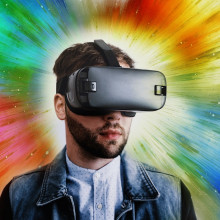
20:56 - A VR university campus
A VR university campus
Chris Headleand, University of Lincoln
Another one of the side effects of the pandemic has been having university students off campus, and despite Zoom calls and Skype, it’s not quite the same thing as getting to wander round the buildings and explore. Back in May one group decided to have a go at making online uni more immersive using virtual reality - that’s right, they built a 3D virtual environment of the University of Lincoln, and if you happen to have a headset, you can look around and explore as BBC presenter Chris Berrow heard from Chris Headleand...
Chris H - So this all started really as we were trying to create like a virtual meeting room space and because we wanted to use this for university research projects and even actually embedding some research experimentation in there, we tried to base it off a university building. Literally just as we got to the point where we were starting this project, we noticed that there was a lot of stuff coming up on Twitter about people missing being on campus because of lockdown just kicking in. And university is a weird engagement, right? You move there, it becomes your home, it becomes a big part of your life. And suddenly all these people have been told that they basically couldn't socialise with their friends, couldn't, you know, mingle with their kind of extended family and university's a lot more than its buildings. It's a lot more than its campus. It's a community. It's the research. It's the ethos of the environment. The buildings are really closely linked to a lot of those memories as well.
Chris B - You know, you can get bogged down in doing every single metre of every single corner and then making sure that the walls are round here instead of there being a straight line. How kind of liberal were you when it came to the actual designing of the campus?
Chris H - We want to make sure that all the buildings were actually recognisable as the building they were supposed to be. But if you learn to navigate this, you can also navigate in the campus, you can get a sense of where you are. Everyone has their favorite bit of campus, you know, and if we try to do things too accurately, you know, things change quite often. We're quite dynamic. We're quite an agile university and I literally just couldn't keep up to date with the minor tweaks that we make as we go along.
Chris B - The one question that my wife who actually went to the university said I had to ask you was, did you include the swans? Because swans are such, apparently a huge part of going to Lincoln University.
Chris H - Yeah. We are super into our waterfowl at Lincoln. Everything is Swan something, you know, our bar is the Swan. There’s mythology around these swans, there’s swan watching, you know you’re not really a University of Lincoln student unless at some point you have been chased by a swan. I mean even our mascot is Swanny. We really wanted to get swans in there, but I am not a free-form modeller and I am not an animator, and I couldn’t not find anything that didn’t look like a really ugly swan. I couldn't find anything that matched the rest of our assets. And I thought this is just not gonna work. So I couldn't get anything like that in version one. But fortunately one of my colleagues from the school of media, Graham Cooper, has created this absolutely fantastic swaggering swan. It struts, it swaggers, it's got this kind of like funky attack mode. We're hoping he's going to go out there in the next update.
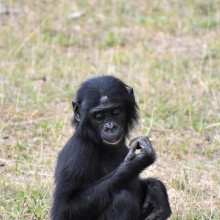
24:34 - Cultured bonobos
Cultured bonobos
Liran Samuni, Harvard University
For scientists doing field work, we're sure many of them would love to be able to snap their fingers and transport themselves to their field sites, which are sometimes deep in the jungle. In October, Eva Higginbotham spoke to Liran Samuni from Harvard University, whose research on bonobos takes her on a 4 hour flight out of the capital of the Democratice Republic of Congo, then onto a 6 hour motorbike ride, and then finally after a few more miles of just plain walking she reaches her destination...
Liran - As humans, we are this crazy special, unique species. We are all over the world. We are capable of cooperative behaviours that have no parallel in the animal kingdom. And one of the things that is considered to be uniquely human is our great capacity for culture and cultural differences, which are group-specific behaviours that are acquired through learning. And I think one of the questions is, where in the history, in the evolution of our species, did we develop the tendency for cultural behaviour or cultural differences, traditions? When we study the evolution of humans, one way is through fossils. We go to excavations and we find fossils that tell us a little bit about the history of our species. But when we want to look at specific behaviours, it's very tricky with fossils because behaviour does not fossilise. And in that sense, we turn to some of our relatives, primates, and especially bonobos and chimpanzees who are our closest living relatives. This paper looks at what we call diversity of behaviours and especially one that is emerging between two groups of bonobos that live in the same environment. Each group is specialised on the hunt of different prey. One group hunts antelopes, small antelope called the Diker, and the other one hunts a gliding rodent. The striking thing is that despite the fact that they live just in the same environment, they hang out in the same places, they still show this group identity in terms of what they feed on
Eva - Is that surprising for animals of the same species that are in the same environment to have that difference in behaviour?
Liran - I think it's very unique and special. Yes, because we can imagine that a lot of how behaviours form and come about is in animals reacting to their environment. If the environment is a certain type of environment, then different behaviours can emerge. But here we have the exact same environment and still almost two different solutions to the same environment.
Eva - Antelope are just such different animals from the smaller rodents that the other group hunts, it seems like such a big difference in strategy. Where do you think that comes from between these two groups?
Liran - That's a great question. And it's a bit of a mystery. One idea that we had is that meat is a high quality food, but it's very rare and it's hard to attain. So hunting frequencies are quite low. And when they're managing to catch the animals, they're super excited, really hugging each other, vocalising, and a lot of excitement. One idea that we have of how this could happen that two groups that live in the same area have such different techniques in a way to avoid competition between them. So if we can imagine that there is this high quality food that is hard to access, and it's very rare, it might be advantageous for each group to specialise on a different prey, so to avoid competition or to reduce the competition.
Eva - What might this tell us about the evolution of culture?
Liran - We know by now that community culture, which is knowledge that is transferred from generation to generation, and the culture is shaped through knowledge that is passed on - I think this is something that we don't have great evidence that nonhuman animals have that. However, the basic capacities of culture, which are two different groups, no differences in their environment, but still showing some diversity of behaviours that is evolved as a function of learning, I think this shows that on the prerequisites of culture as it's seen in humans today. So I think especially the fact that both bonobos and chimpanzees show these abilities tells us a lot about how our ancestors were. Another very important reason why we want to study those animals is in terms of conservation. There is knowledge in the world that is in nature and in wildlife and we can look at it almost as a library full of books that no one has ever read. And through research, we are able to get a glimpse at some of those books. And I think with the biodiversity crisis, it's almost like imagining that this library will be burnt and this knowledge will be forever gone. So I think in some ways, studying those animals, we are trying to preserve some of this knowledge and at the same time conserve these incredible animals

30:19 - The importance of play
The importance of play
Stuart Brown, National Institute for Play
Have you played enough today? We all know we should try and move our bodies a bit and eat some vegetables for our health, but for some researchers, it’s also really important that we try and introduce some playfulness into our lives where we can. And playing is not just for kids, as Katie Haylor heard from Stuart Brown of the National Institute for Play in California back in September…
Stuart - Though we are capable of imagination and imaginary play as adults, the drive to play and the percentage of time one, in adulthood, plays is less than obviously than when we were children. But the wiring of the brain to respond to play signaling occurs throughout life. It's different in various ages and cultures and genders and so on, but it's there. So that the ability to respond to playful stimuli is a part of being human through our life cycle.
Katie - So what constitutes play as an adult? Is it having a giggle, relaxing, doing a hobby?
Stuart - I like to think of the best way to define play for adults and really for children too, is as a state of being in which what you are doing and what you are experiencing is voluntary. It's fun. It gives you a sense of freedom from anxiety about the time pressure or the outcome. It's something you want to engage in again, it can be highly varied. The individual response to playful stimuli can be gardening, reading a novel, climbing a mountain, going to a pub and having fun with your buddies. You know, there are all kinds of phenomena that constitute true and or real play, but it is essentially a state of being that is different from all others. And that's not a common way of thinking of play. We think of it as a little nonsensical, it's purposeless or appears purposeless. It's not as important as real responsibility. And yet, when I look at the phenomenon of severe play deprivation, it has a profile amongst adults and children that indicates it's a necessity for being fully human.
If you look at the long developmental evolutionary history of play itself and look at, you know, reptiles who don't play as frequently, or as vigorously as mammalian and bird species, you find a mosaic of play that is highly varied. Just like there's a mosaic of sleep that's highly varied. But you still see play occurring in the more complicated, more intelligent species. And it occurs and can be defined as a separate form of behaviour from all others.
Katie - I appreciate we live in a complex world, made up of complex societies, but do you think there's enough play around?
Stuart - It depends on the circumstances. You know, I think right now with the COVID-19 shelter at home, I think it's tough. No youth sports, no adult gatherings that are festive, you know. I think it's tough to play enough. And I think that we're gonna see some consequences from that.
Katie - Do you have any suggestions as to how people can build play into their lives? Because as you were talking, I was just wondering if it would be appropriate to kind of build play somehow into the work environment?
Stuart - No, I think it's very possible to build play into the work environment. I think it's very possible for an individual to recognise that they need it, and for them to find something in their day, that gives them a sense of freedom and a sense of fun and a sense of not relying on outcome. So that people realise that just like hand washing and good nutrition are important, so too is finding for yourself moments, even when you're stressed, that are playful. Whether it's music or dance or, you know, imaginary fantasies, it is an important element of personal health.

Graphs: a how to guide
Nira Chamberlain, Institute of Mathematics
Thanks to the pandemic the eyes of the world have been on various graphs representing cases, tests, and all sorts, but there are some common tricks in the graph making-trade to be aware of, as Adam Murphy heard from Nira Chamberlain, the president of the institute of mathematics, earlier this year...
Nira - One of the most common ways to actually manipulate a graph is, let's say you have a bar chart and you want to see how much profit you're making beyond your competitor. Or you want to show that, you know, your product is much better than your competitor. So let's say my product makes you a hundred pounds saving while the competitor only makes a 95 pound saving. So one of the ways of actually manipulating this is actually to compress the vertical axis so that it actually only starts from, let's say, ninety and ends at a hundred. So when you actually look at that, it looks like your profit is twice as much than your competitor, without realising that actually the chart should go all the way down to zero. So that's a common practice that people do.
Adam - What tips would you have for people on how to read graphs effectively? Say someone sits down and they see a graph in a newspaper, what's the best way of going about reading and understanding and not being fooled?
Nira - The key thing is one, look at the Y axis, does it go up sequentially, or does it go up geometrically? So is it a log scale. Second, every graph should have a source. You know, they say this is taken from a source, but also actually look at the date which the graph was done. I mean, sometimes people will quote you statistics, but the statistics are actually out of date. So what's the best thing to do is look at the Y axis and look at the source and look at the date from when this statistic was actually produced.
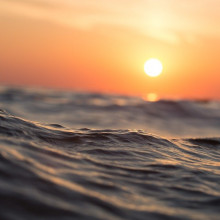
36:58 - Deep sea mining: the debate
Deep sea mining: the debate
Gerard Barron, DeepGreen, & Alex Rogers, Rev Ocean
Have you ever thought about where the metals in your phone come from? Or in electric cars? Cobalt is one of nature’s 118 chemical elements, and for centuries it’s been valued for its distinctive blue colour, but more recently it’s become a vital ingredient in the production of re-chargeable batteries. It’s mainly been extracted from ore quarried or mined on land, a process which can be environmentally damaging and disruptive for the communities who live nearby. But what if there was a different source of cobalt, and other metals, we need for electric car batteries? Well there is, but it’s deep down in the ocean and, as you might expect, plans to mine for it there are not without controversy. Some of the ocean reserves are in what’s known as the Clarion–Clipperton Fracture Zone - the CCZ - an area that’s about as big as Europe four thousand metres below sea level in the Pacific, as Eva Higginbotham heard earlier this year...
Eva - Despite being miles away from civilization, the CCZ has been an area of great interest for two key groups. Those who see it as a great resource opportunity, and those who feel it should be protected. Now, this is because the seabed in the CCZ is absolutely littered with polymetallic nodules, these strange potato-shaped lumps that are jam-packed with various metals, including cobalt, nickel, copper, and manganese. I spoke to Gerard Barron, the CEO of Deep Green, a deep sea mining company, focused on these nodules.
Gerard - A lot of people don't think about what goes into the battery that's in your mobile phone, or all the electric vehicle batteries that are going to be driving around our roads. But those batteries are made up of metals like cobalt. And in the case of cars, they're made up of nickel and cobalt and copper. And if you think about our desire to move away from fossil fuels, that means we're going to need hundreds, in fact billions, of tons of metals that are required for the green transition. So today all of these metals come from terrestrial known landmines, and a lot of people are shocked when they realise just what an environmentally unfriendly process mining has always been
Eva - Gerard's company Deep Green recently showed some research arguing that the damage we do to the environment by traditional land mining to get these metals was greater than the damage we would do to the deep ocean through the use of their machines, which they call gentle giants, essentially like plows that would run along the sea bed scooping up the nodules. The thing is, a lot of ocean conservation advocates and environmental scientists have disputed that conclusion. Here's Professor Alex Rogers of Rev Ocean.
Alex - The risk lies in the fact that we know so little about the deep ocean, both in terms of what lives down there, but also in terms of the way it actually works. What we understand so far, because of the relatively low supply of food into the deep ocean and the low temperatures, things happen very, very slowly. So animals grow and live for a very, very long time. If the ecosystems of which these animals are a part of are damaged, then recovery doesn't take place for decades or even hundreds or thousands of years, if it occurs at all
Eva - But what is living so far below sea level anyway? According to Gerard, not much.
Gerard - There's not much food down there, which means there's not much life down there. And in fact, most of the life that is in the area is very small organisms that live in the muck. So you don't find plants. You don't find coral reefs. You don't find lots of animals moving about.
Eva - On balance, companies like Deep Greens see the ecological impact of deep sea mining as the lesser of two evils when compared to terrestrial mining. But Alex and many other ocean scientists strongly disagree.
Alex - I think that's an incredibly dangerous argument to get into. You know, if you start to sort of toss up valuations of one form of life versus another, I think you get into very, very risky territory. I mean, this life is down there not doing nothing. It's very difficult to simply discard all that diversity of life that occurs in the deep ocean on the grounds that well, we don't see it every day. It's not an argument that I think is a valid one, particularly given our lack of knowledge of the deep ocean at the moment.
Eva - There's also the wider impact on life that lives above the seabed. Mining activities will stir up large plumes of sediment into the water, which will go several hundred metres above the sea floor. The wastewater and sediment produced from the mining will be dropped back in the ocean at an as yet undetermined depth, which is bound to interrupt life all the way down. There's also the fact that all this mining would be very noisy, which would throw off animals like whales that use echolocation to find their way around. It seems clear that deep sea mining for polymetallic nodules would be an absolute catastrophe for the deep sea ecosystem, but Gerard would argue, but that is a price we should be willing to pay.
Gerard - Waiting is not an option. It is irresponsible to suggest we should wait another 10 years while we learn more because climate change is real. One of the most impactful factors of climate change comes as a result of burning fossil fuels. And if, as our study found, that actually the increased metal production on land that will be necessary to meet the demands of the green transition releases gigatons more of CO2 emissions, then that's a really dumb thing to be doing. What we should be doing is continuing to research. We should be continuing to learn. And then we should be with the knowledge that we gather, make informed, intelligent decisions.
Eva - Many people I spoke to, including Alex, suggested that this was a bit of a false choice. That is to say, we don't have to choose either environmentally damaging land mining or environmentally damaging ocean mining. There's a lot of research at the moment trying to make batteries and other goods important for renewable energy without using these metals. Ultimately, most ocean conservationists are calling for a ban on deep sea mining of at least 10 years while research into impacts continue.
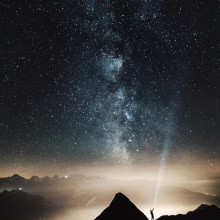
43:48 - The Square Kilometre Array
The Square Kilometre Array
Phil Diamond, SKA Organisation
From the deep sea to the deep dark sky above now, and how we know what’s up there. The Square Kilometre Array is a giant readio telescope, and recently Adam Murphy and Ben Mcallister spoke with Phil Diamond, the Director General of the SKA project...
Phil - The science case for SKA, if I may...here it is.
Ben - Hahaha! For audio listeners, Phil has just picked up two very large thick books, the size of two encyclopedias each.
Phil - Yeah. So they actually - they weigh 9.8 kilograms combined.
Adam - Oh, good exercise then. Yeah.
Phil - Yeah. So that's 2000 pages describing the science that astronomers hope to do with the SKA, but in there, we have identified what we call key science programs. So the SKA must be able to deliver these key science projects, as well as do an enormous other range. But at the very least, it must be able to do the key science projects. One is using pulsars, to use pulsars to understand the nature of gravitational waves. A few years ago, LIGO the laser interferometer gravitational wave observatory detected gravitational waves from massive objects coalescing, and emitting gravitational waves across the universe. That's one way of detecting them, another way of detecting gravitational waves from much heavier objects, supermassive black holes at the hearts of galaxies, is by observing the effect of the gravitational waves on the pulsars that sit across the Milky Way, across our galaxy. We'll be using the SKA to monitor the signals coming from a network of pulsars. These are very accurate clocks. Nature's clocks remember, distributed across the sky. And as a gravitational wave crosses our galaxy, it will perturb the clock signals and we'll be able to detect that perturbation, and therefore measure the gravitational wave.
Ben - So like a galaxy wide gravitational wave observatory, as opposed to a few kilometre tunnel?
Phil - Yeah. It's using the galaxy as a telescope, as a detector, which I find mindblowing. Another key area is to use hydrogen. So with the SKA, one of the reasons we're going from 50 megahertz all the way up to 15 gigahertz, is to be able to have that full range of frequency, to detect hydrogen all the way back, almost to the Dawn of the Universe. So we want to see what happens in those early years of the universe. When the universe started to become transparent to radiation, and watch the first stars, the first galaxies evolve all the way up until the present day. So essentially, we'll be acting as a time machine.
Ben - Is the point just that because hydrogen is everywhere in the universe, it's extremely abundant. Being able to see the characteristic, radiation that only hydrogen emits, allows you to see a lot of the interesting structure. And because the signals of the hydrogen in the early universe are still kicking around in the universe, they're just changed a bit, we can still see those really early signals and kind of reconstruct what happened in the early universe?
Phil - No, that's exactly right. Our images of the early universe have come from projects, spacecraft like Planck, an ESA mission that ended a few years ago, or its precursors. These satellites produced snapshots of what the universe looked like when it was about 400,000 years old. Bear in mind, it's almost 14 billion years old now. So we have these snapshots and there's a huge amount of physics being gained from those snapshots of the universe as a baby, as a child, really. And what we want to be able to do with hydrogen, which as you say, is everywhere, is make a movie of the universe, from its childhood, growing up through adolescence, to the mature universe that we now live in. There's going to be some fantastic things come from that, that ability to just observe that time period.
Ben - I can't wait to see what we learn.

Why do we have Daylight Saving Time?
Here in Europe it is dark and cold, and thanks to having switched back to regular time from Daylight Saving Time back in October, it’s even darker in the evenings than otherwise. But where did Daylight Saving Time come from, and is it still a good idea? Eva Higginbotham tried to answer this question back in November...
Eva - Here in Europe the clocks have recently gone back, causing - as usual - much confusion. And it’s not just humans that are missing their appointments; in the words of a Facebook friend, “how do you explain to a cat who routinely gets fed at 4pm that the clocks went back and he is screaming at me an hour early?”
The process of switching back and forth to daylight saving time - or daylight savings time, as most call it - feels unnatural. Why then do we do it?
The concept comes rather surprisingly from Benjamin Franklin, who, on holiday to Paris, saw the locals sleeping in through the early summer mornings and staying up after dark - and wondered whether they couldn’t just shift their schedules to save on candles. It was a bit of a joke - he suggested using cannons to wake everyone up - but by World War 2 many countries had adopted it and it’s stayed with us almost ever since.
For countries farther from the equator, with more pronounced seasons, the idea makes theoretical sense. If you wake up around 6,7,8 am to go to work, you’ll catch the full day’s worth of sun in winter, but miss the sunrise in summer. May as well put the clocks back, make the sunrise effectively happen ‘later’, and catch more daylight.
To understand how it works in practice, though, you’re getting into the complex world of the body clock. Our bodies run on a close to 24-hour rhythm, raising our temperature and blood pressure when it’s time to wake up, controlling our hormone levels throughout the day, releasing melatonin that helps us sleep at night. Each cell has its own clock, which keeps time by a ‘master clock’ in the underside of the brain. And the master clock sets its time by the sunlight.
But - every person is different. The reason you get some being morning larks and some being night owls is because people’s body clocks synchronise with the light differently. You can get data on this by looking at the times people wake up on their days off work - and data from Americans shows that three quarters would prefer to wake up and sleep later. Daylight saving time then moves the official time in the opposite direction to what they’d prefer - increasing what’s called their ‘social jet lag’, and bringing in all sorts of health problems.
So night owls don’t like the new times. Farmers generally don’t like the change, because they wake up with the sun anyway. And whenever people are surveyed on the issue, it’s usually a minority saying they think it’s worth the hassle.
But, does it save energy on lighting houses, as Ben Franklin suggested? There’s evidence from Australia and the USA that reductions in energy demand for lighting were matched by increased demand for air conditioning during the longer daytime. In the words of the University of Washington’s Hendrik Wolff, “everywhere there is air conditioning, our evidence suggests that daylight saving is a loser.”
There’s counter arguments though that the extra light is just good for us. People spend more time outdoors; the roads are lighter for the evening rush hour; and there’s less crime because of the light. In response, others propose: well if it’s so good in summer, why not year round? Perennial daylight saving time - effectively moving your country one time zone to the east.
But that proposition also causes arguments, as it would mean that in the winter, school children and workers would likely be starting their days in pitch darkness, and lots of circadian rhythm experts warn that that would cause harm too.
So, the debate continues, but for now, it seems opinion will keep flip flopping on whether it’s worth making the switch. Which seems pretty appropriate, actually
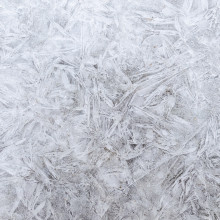
52:37 - The ancient ice bird
The ancient ice bird
Love Dalén, Centre for Palaeogenetics
Meet the ice bird, a treasure found under the Siberian permafrost. Love Dalén from Stockholm University told Phil Sansom the story…
Love - Back in 2018 I was part of a research expedition to a place called Belaya Gora in Northeastern Siberia, to go alongside Russian tusk hunters that were searching for mammoth tusks, going into these permafrost tunnels. And while we were there, one of the local Russians came out from one of the tunnels holding something very small in his hand. And it turned out to be a very small bird that looked extremely well preserved.
Phil - What did it look like?
Love - It was a bit dirty and wet, but otherwise it basically looked like a bird that had died just a few days ago.
Phil - Just like an ordinary brown bird?
Love - Yeah. I mean, given that it was partially covered in melted permafrost, which is muddy, it gave a quite sad impression initially, given that it was wet and so on; but it was pretty clear when we cleaned it up that all the feathers were preserved, and the overall shape, and you could see a small injury to its stomach where you could see some of the intestines and stuff like that. So it really looked like something had died only a few days ago.
Phil - Did you give the bird a name?
Love - Initially we had been calling the bird Ice Bird.
Phil - And you didn't know what kind of bird it was?
Love - We didn't know what kind of bird it was, what species it was...
Phil - What did you do to try and figure that out?
Love - We used the feathers to send for radiocarbon dating. This is a method that you can use to very accurately determine the age of an old specimen. It turns out that this part was 46,000 years old.
Phil - That so old!
Love - It is exceptionally old. It's very close to the actual limit of radiocarbon dating.
Phil - Did you figure out what kind of bird it was?
Love - Yep. We then extracted DNA from the bird and sequenced it, and this bird was from a species called horned lark.
Phil - Horned lark...
Love - Which is a small passerine bird that inhabits a large distribution in the Northern hemisphere.
Phil - What was the state of the DNA after 46,000 years in the Siberian ice?
Love - The DNA is in quite poor state. Normally DNA molecules are extremely long, and over time they fragment into smaller and smaller pieces, and this is how the DNA looked in this specimen as well. On top of that, the DNA was also contaminated by DNA from the environment - plants in the sediments, and bacteria that had probably been infesting the bird right after it died, and so on. By sequencing a lot of the DNA in there, we could pick out the few DNA sequences that actually came from the bird itself, and then we could puzzle together the whole mitochondrial genome - the small genome that exists inside the mitochondria, which are the small powerhouses inside all animal cells.
Phil - Did the mitochondria look like the mitochondria of a horned lark today? Or was it like, "clearly this is old mitochondria here"?
Love - This bird is clearly old because it doesn't look exactly like the modern horned larks. Today, horned larks are divided into a large number of different subspecies. And what we could show was that this particular bird actually seems to have belonged to a population that was a common ancestor of two subspecies that exist today.
Phil - So this is before the two species were two; this is the original one?
Love - Yes. Before the two subspecies evolved.
Phil - Does that tell you something about how these two subspecies evolved, or when they evolved?
Love - We think it does. So these two subspecies, one of them lives in Northernmost Russia today, and the other one inhabits the steppe in Mongolia. And so what we think happens is that back during the last Ice Age, the environment was comprised of a bit of a mosaic of different habitat types. And what happened at the end of the last Ice Age was that this mosaic stratified into the big biomes that we know today. So we do think that when the environment itself stratified into these large scale biomes, so did the horned larks, to the North and also to the South.
Phil - How incredible is it that this bird got injured, flew into the ice or something, and then 46,000 years later it's telling you all about how two different subspecies formed?
Love - It's quite amazing, isn't it? That something that old is preserved in such a perfect state. It's a bit like using a time machine where we can travel back in time and look at evolutionary change.
Phil - Maybe it's because I watched Jurassic Park last night, but it feels a bit like that. You know, they found the fly in the amber with the DNA from the dinosaur, and it's just this unbelievable event that tells you a million things.
Love - It really is. Actually one of our colleagues who was with us in Siberia, inside these tunnels, he kept whistling the theme song from Jurassic Park while we were there! Which was quite fitting.










Comments
Add a comment